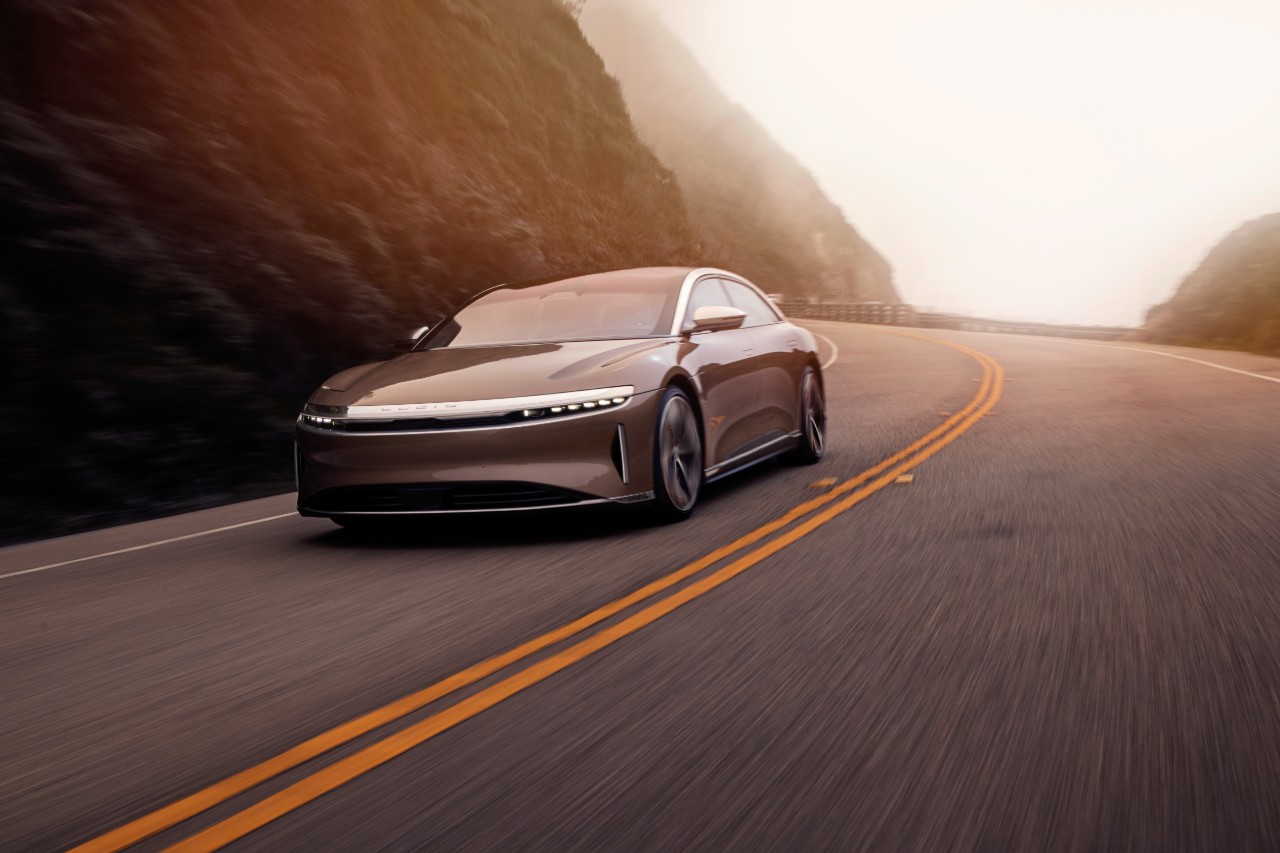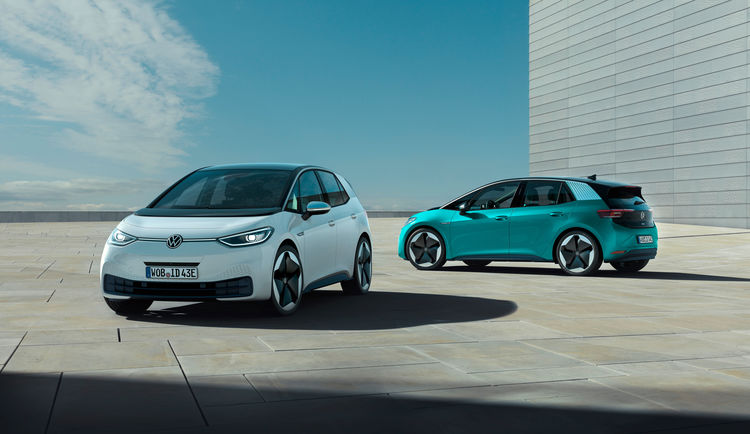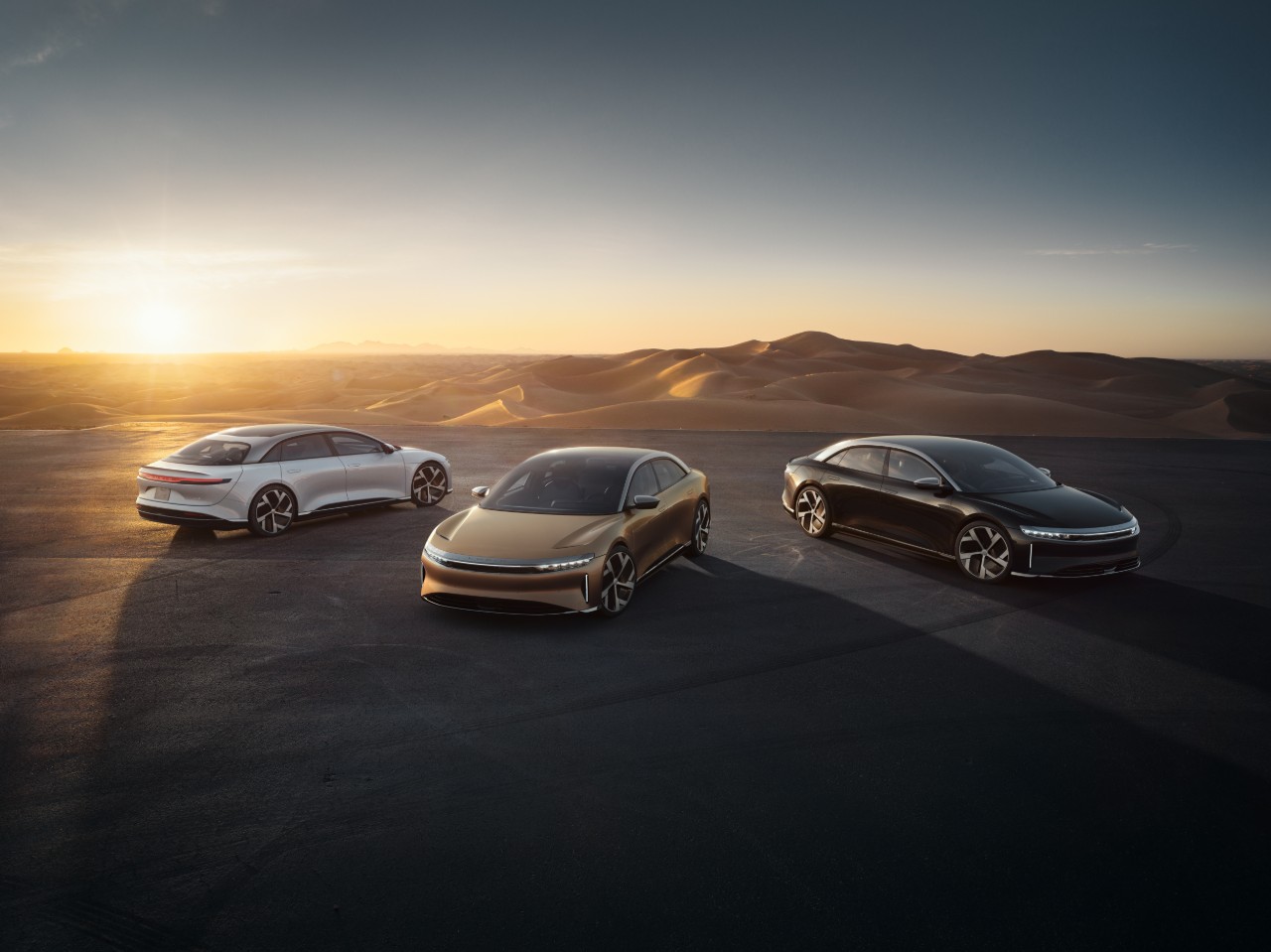Lucid’s unveiling of the Air was impressive; there is no doubt about that. It has all the ingredients for a great electric car: Speed, power, capability, luxuriousness, range, quality engineering, and a team of highly-dedicated engineers who are working to improve upon the already solid foundation that the company has laid down.
Immediately, what thought came to my mind while watching the presentation was, “They’re legit.” It is evident that Lucid was taking things seriously and was not using a bunch of fancy B-roll and suspenseful music to sell a product that wasn’t in production. No way. Lucid was dead serious about their car, and they recognize that until production begins and the Air starts being delivered to consumers, they haven’t accomplished a damn thing.
That’s a refreshing mindset in today’s day and age. To be honest, I understand a lot of companies are coming out and saying that they’re the next big thing. They’re the next Tesla, and their EV platform is the one that is going to solve all the problems.

These claims have come up empty time and time again. But Lucid definitely took a different approach. While describing and laying out the Air piece by piece for viewers to gauge thoughts on, the company’s CEO Peter Rawlinson was vocally supportive of Lucid’s efforts this far. However, he knows that the hard work is far from over. Just ask Elon Musk, who called Model 3 manufacturing “production hell” a few years ago.
That is what is super respectable about Lucid. They know that production is the real test, and it is one that never ends. After manufacturing begins and cars are delivered, there will be room for celebration, and there will be time to look at the accomplishments over the last five years. Until then, it’s hard work and grinding it out.
But it begs the question, can Lucid catch up to Tesla? Is this possible?
This is a preview from our weekly newsletter. Each week I go ‘Beyond the News’ and handcraft a special edition that includes my thoughts on the biggest stories, why it matters, and how it could impact the future.
Tesla has a considerably-sized head start by a few years over Lucid, and Tesla has already been given the nod that it has a multi-year advantage over some of the biggest companies in the world. Volkswagen and Audi have both admitted it in the past, but their focus has not primarily been on EVs. Gas cars have filled the minds of VW CEOs for years.
Ever since VW has started manufacturing the ID.3 and ID.4, they have been plagued with a variety of issues that have been software related. Volkswagen has fantastic engineering, and the problems they have faced have been hindering the company’s ability to release a quality EV promptly.
Now, VW has an extensive and successful history in automotive manufacturing. While they have only a few years of experience with developing electric cars, they have still stumbled from time to time, and this is after having so many years of manufacturing experience.

Lucid could experience some of those problems when the production of the Air begins. These issues could be a big problem because they may delay the ultimate delivery date of the Dream Edition, which is Spring 2021.
However, there is a chance that Lucid has worked out all of the kinks. Let’s not forget that Lucid didn’t spring up overnight. It was originally Atieva and was founded in 2007. It seems that a lot of the significant work was done when Peter Rawlinson came on, who worked for Tesla and helped with the Model S.
Rawlinson is a seasoned and experienced veteran, and he has done some awe-inspiring things with Lucid thus far. But is there a chance that Lucid can catch up to Tesla? Sure, but what proof is there that they have a chance?
First off, it is the range. 517 miles of range in the Air, which is impressive considering it is only a 113 kWh battery pack. This is an unheard-of amount of traveling distance in an EV and is considerably more than the Model S’ 402-mile rating. Next, the performance of the Air is critical to the company’s competition with Tesla. The Air is faster than the Model S Performance, but will it be faster than the Plaid Mode Model S? It is unknown, but many seem to think that the newly-engineered flagship sedan from Tesla will be the perfect answer to the Air. Whether that becomes a reality or not remains to be seen.
What is ultimately essential with the development of the Air is we can see that real EV manufacturers are coming to light with competitive products. For so long, legacy automakers have pumped out half-hearted attempts at producing an electric car. They throw a low kWh battery pack into a sedan, give it 100 miles of range and call it “the next big thing.” News flash: it isn’t. If you want to compete in this sector, you have to give consumers a reason to want your vehicle over a Tesla, which is really the benchmark at this point, especially since the Model 3 is widely affordable.
Lucid answered a lot of those questions on Wednesday night. They proved that their car is worth it, and they have plenty of things that could be “better” than what Tesla has to offer. But, it might not be for long, because Elon Musk is the master at taking the wind from a competitor’s sails when a new product is launched.
In reality, anything can happen. But the good news is the fact that Tesla now has a real competitor who seems to be serious about EV manufacturing. There is no goal way down the road for production, and their car works and is tested. With the competition, Tesla could see its best days yet, and Lucid could ultimately be another driving force behind widespread EV adoption.
A big thanks to our long-time supporters and new subscribers! Thank you.
I use this newsletter to share my thoughts on what is going on in the Tesla world. If you want to talk to me directly, you can email me or reach me on Twitter. I don’t bite, be sure to reach out!

News
Tesla is not sparing any expense in ensuring the Cybercab is safe
Images shared by the longtime watcher showed 16 Cybercab prototypes parked near Giga Texas’ dedicated crash test facility.

The Tesla Cybercab could very well be the safest taxi on the road when it is released and deployed for public use. This was, at least, hinted at by the intensive safety tests that Tesla seems to be putting the autonomous two-seater through at its Giga Texas crash test facility.
Intensive crash tests
As per recent images from longtime Giga Texas watcher and drone operator Joe Tegtmeyer, Tesla seems to be very busy crash testing Cybercab units. Images shared by the longtime watcher showed 16 Cybercab prototypes parked near Giga Texas’ dedicated crash test facility just before the holidays.
Tegtmeyer’s aerial photos showed the prototypes clustered outside the factory’s testing building. Some uncovered Cybercabs showed notable damage and one even had its airbags engaged. With Cybercab production expected to start in about 130 days, it appears that Tesla is very busy ensuring that its autonomous two-seater ends up becoming the safest taxi on public roads.
Prioritizing safety
With no human driver controls, the Cybercab demands exceptional active and passive safety systems to protect occupants in any scenario. Considering Tesla’s reputation, it is then understandable that the company seems to be sparing no expense in ensuring that the Cybercab is as safe as possible.
Tesla’s focus on safety was recently highlighted when the Cybertruck achieved a Top Safety Pick+ rating from the Insurance Institute for Highway Safety (IIHS). This was a notable victory for the Cybertruck as critics have long claimed that the vehicle will be one of, if not the, most unsafe truck on the road due to its appearance. The vehicle’s Top Safety Pick+ rating, if any, simply proved that Tesla never neglects to make its cars as safe as possible, and that definitely includes the Cybercab.
Elon Musk
Tesla’s Elon Musk gives timeframe for FSD’s release in UAE
Provided that Musk’s timeframe proves accurate, FSD would be able to start saturating the Middle East, starting with the UAE, next year.

Tesla CEO Elon Musk stated on Monday that Full Self-Driving (Supervised) could launch in the United Arab Emirates (UAE) as soon as January 2026.
Provided that Musk’s timeframe proves accurate, FSD would be able to start saturating the Middle East, starting with the UAE, next year.
Musk’s estimate
In a post on X, UAE-based political analyst Ahmed Sharif Al Amiri asked Musk when FSD would arrive in the country, quoting an earlier post where the CEO encouraged users to try out FSD for themselves. Musk responded directly to the analyst’s inquiry.
“Hopefully, next month,” Musk wrote. The exchange attracted a lot of attention, with numerous X users sharing their excitement at the idea of FSD being brought to a new country. FSD (Supervised), after all, would likely allow hands-off highway driving, urban navigation, and parking under driver oversight in traffic-heavy cities such as Dubai and Abu Dhabi.
Musk’s comments about FSD’s arrival in the UAE were posted following his visit to the Middle Eastern country. Over the weekend, images were shared online of Musk meeting with UAE Defense Minister, Deputy Prime Minister, and Dubai Crown Prince HH Sheikh Hamdan bin Mohammed. Musk also posted a supportive message about the country, posting “UAE rocks!” on X.
FSD recognition
FSD has been getting quite a lot of support from foreign media outlets. FSD (Supervised) earned high marks from Germany’s largest car magazine, Auto Bild, during a test in Berlin’s challenging urban environment. The demonstration highlighted the system’s ability to handle dense traffic, construction sites, pedestrian crossings, and narrow streets with smooth, confident decision-making.
Journalist Robin Hornig was particularly struck by FSD’s superior perception and tireless attention, stating: “Tesla FSD Supervised sees more than I do. It doesn’t get distracted and never gets tired. I like to think I’m a good driver, but I can’t match this system’s all-around vision. It’s at its best when both work together: my experience and the Tesla’s constant attention.” Only one intervention was needed when the system misread a route, showcasing its maturity while relying on vision-only sensors and over-the-air learning.
News
Tesla quietly flexes FSD’s reliability amid Waymo blackout in San Francisco
“Tesla Robotaxis were unaffected by the SF power outage,” Musk wrote in his post.

Tesla highlighted its Full Self-Driving (Supervised) system’s robustness this week by sharing dashcam footage of a vehicle in FSD navigating pitch-black San Francisco streets during the city’s widespread power outage.
While Waymo’s robotaxis stalled and caused traffic jams, Tesla’s vision-only approach kept operating seamlessly without remote intervention. Elon Musk amplified the clip, highlighting the contrast between the two systems.
Tesla FSD handles total darkness
The @Tesla_AI account posted a video from a Model Y operating on FSD during San Francisco’s blackout. As could be seen in the video, streetlights, traffic signals, and surrounding illumination were completely out, but the vehicle drove confidently and cautiously, just like a proficient human driver.
Musk reposted the clip, adding context to reports of Waymo vehicles struggling in the same conditions. “Tesla Robotaxis were unaffected by the SF power outage,” Musk wrote in his post.
Musk and the Tesla AI team’s posts highlight the idea that FSD operates a lot like any experienced human driver. Since the system does not rely on a variety of sensors and a complicated symphony of factors, vehicles could technically navigate challenging circumstances as they emerge. This definitely seemed to be the case in San Francisco.
Waymo’s blackout struggles
Waymo faced scrutiny after multiple self-driving Jaguar I-PACE taxis stopped functioning during the blackout, blocking lanes, causing traffic jams, and requiring manual retrieval. Videos shared during the power outage showed fleets of Waymo vehicles just stopping in the middle of the road, seemingly confused about what to do when the lights go out.
In a comment, Waymo stated that its vehicles treat nonfunctional signals as four-way stops, but “the sheer scale of the outage led to instances where vehicles remained stationary longer than usual to confirm the state of the affected intersections. This contributed to traffic friction during the height of the congestion.”
A company spokesperson also shared some thoughts about the incidents. “Yesterday’s power outage was a widespread event that caused gridlock across San Francisco, with non-functioning traffic signals and transit disruptions. While the failure of the utility infrastructure was significant, we are committed to ensuring our technology adjusts to traffic flow during such events,” the Waymo spokesperson stated, adding that it is “focused on rapidly integrating the lessons learned from this event, and are committed to earning and maintaining the trust of the communities we serve every day.”










